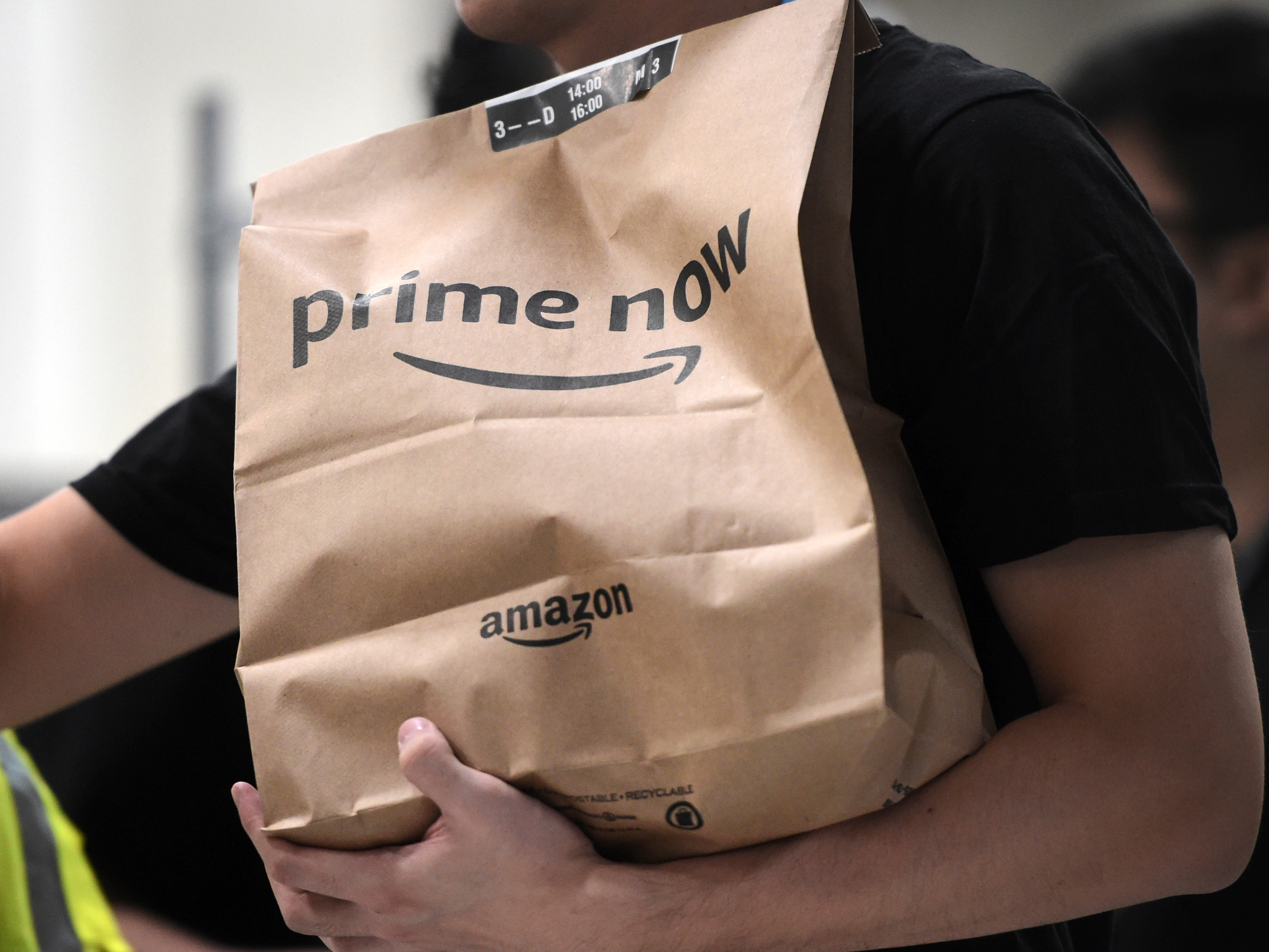- Amazon is rapidly expanding its free two-hour delivery service from Whole Foods stores through Prime Now.
- Billed as an additional option for grocery delivery, it’s actually a huge change in strategy.
- Delivering directly from stores instead of from a fulfillment center could be a way for Amazon to crack grocery delivery by making it cheaper and more reliable.
Amazon is expanding its free two-hour delivery service from Whole Foods stores through Prime Now at an ever-increasing rate.
Amazon announced on Tuesday that it would be rolling out free two-hour delivery from Whole Foods stores for Prime members in four new cities: Baltimore, Maryland; Boston, Massachusetts; Philadelphia, Pennsylvania; and Richmond, Virginia.
Whole Foods delivery through Prime Now has already been rolled out to 14 metro areas across the country, and it’s expected to grow to even more throughout the year.
While it’s easy to dismiss this as a minor new perk, or a small feature that doesn’t require much fanfare, when taking into account how this changes Amazon’s grocery strategy overall, a bigger picture of where the company is going emerges. In fact, delivering from Whole Foods stores changes the equation substantially.
Amazon's other grocery delivery services - Amazon Fresh and Amazon's own store on Prime Now - both use central delivery centers. But delivery can vary in terms of timing, and the customer experience can be uneven depending on the location. It's also expensive to operate these centers, and it's difficult to predict how much customers will use the service in any given week.
Grocery stores, on the other hand, have all of that figured out already. By using Whole Foods stores as depots, Amazon's grocery delivery switches from a centralized model to one that looks a lot more like Instacart, which has found success linking customers with partner stores.
"The combination of Amazon's e-commerce and distribution capabilities with Whole Foods' physical locations - and the overlap between Amazon Prime members and Whole Foods shoppers - looked like a decisive advantage out of the gate," Maria Steingoltz, a managing director at L.E.K. Consulting, said in a report about grocery e-commerce.
The stores are closer to customers, there's more of them than there are distribution centers, and it makes a lot more sense for reaching customers in far-flung suburbs. In short, it appears to be cheaper to do grocery this way.
Add on to that an online-enabled grocery pickup service, and you've got a huge shift in strategy for the world's largest e-commerce retailer.
Grocery delivery already has a dubious reputation in terms of profitability. Online grocery accounted for a measly 2% of all online sales in 2017, according to L.E.K. But there is latent demand, with 40% of consumers saying they have tried an online grocery service before. L.E.K. expects the business to have its moment soon, predicting it will rise to take 20% of the grocery market by 2025.
There's already a lot of overlap between Amazon Prime members and Whole Foods shoppers, and if those trying the service are happy enough to make it part of their routine, Amazon may actually be able to disrupt another market.

